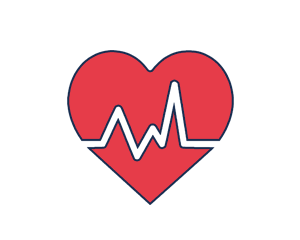Elder Mistreatment:
Understanding Abuse & Neglect
A Joint Certificate Course Offered by the American Society on Aging and the USC Leonard Davis School of Gerontology
Summer session: July 12 - August 13, 2021
Cost: $500 per course for ASA members
Not a member of ASA? Join and register simultaneously for $750
The University of Southern California is home to the oldest and largest school of gerontology in the world—the USC Leonard Davis School of Gerontology. ASA and USC have joined forces to offer an opportunity—exclusively available to ASA members—to earn a certificate of completion from USC in a convenient and flexible online format.
During the five-week course, USC faculty members will explore how to recognize elder mistreatment; victim and abuser characteristics; risk and protective factors; the relationship of elder mistreatment to other types of family violence; clinical presentation in different settings; and what professionals can do when faced with mistreatment.
The course description below details what will be covered during the five-week online course. Supplemental readings will help to enhance your understanding of the five modules. Each week’s lectures, readings and activities will take 2-3 hours to complete. Participants must pass a weekly quiz with a score of 80% or higher and complete a final course evaluation to earn the certificate of completion.
Introduction to Elder Mistreatment
In Week 1, participants will be introduced to elder mistreatment and what constitutes various types of abuse, neglect, and financial exploitation. A discussion of subtypes of elder mistreatment—including emotional/psychological, physical and sexual, financial, and neglect—will provide participants with a deeper understanding of how mistreatment is often carried out and what distinguishes conflict-type abuse from other subtypes. Instructors will discuss how elder mistreatment is related to elder selfneglect and financial fraud, related phenomena that practitioners in aging likely encounter. This and the following sessions will provide extensive use of cases to help describe the range, complexities, and nuances of elder mistreatment. Putting this knowledge into context, instructors will also share where the field is in terms of research and how studies on other types of family violence are informing the field.
Instructors:
Kathleen Wilber, PhD
Mary Pickford Foundation Professor of Gerontology & Professor of Health Services Administration
Laura Rath, PhD
Kylie Meyer, PhD
Learning Objectives
After completing Week 1, participants will be able to:
- Define what is—and what is not—considered elder mistreatment.
- Describe the five primary kinds of elder mistreatment and how they are interrelated.
- List unique forms of mistreatment that can occur in various applied settings (e.g., medical neglect).
- Describe self-neglect and fraud, and how these phenomena are related to elder mistreatment.
- Explain how elder mistreatment is similar and different from other forms of family violence.
- Summarize the current state of research in elder mistreatment and how it compares to the state of research on other forms of family violence.
In addition to watching the video lecture and completing the reading assignments, we will engage in an interactive quiz that reinforces these concepts.
Who are the Victims of Elder Mistreatment?
The purpose of Week 2 is to learn more about the victims of elder mistreatment and to identify characteristics of those most at risk of experiencing mistreatment. Using a multidisciplinary lens, instructors will describe the overlapping demographic, community, behavioral, psychological, and contextual characteristics that put some older adults at greater risk. On the flip side, instructors will identify protective factors that can mitigate risk. Finally, recognizing that many practitioners will encounter older adults who have already experienced mistreatment, we discuss the challenges of working with victims, which can include: the role of age-related factors in increasing the vulnerability for mistreatment, such as changes in cognitive capacity, physical impairment, and social isolation; factors that may contribute to older adults’ reluctance to admit that they are being victimized; and why most victims do not report elder mistreatment on their own.
Instructor:
Zach Gassoumis, PhD
Research Assistant Professor of Gerontology
Kathleen Wilber, PhD
Mary Pickford Foundation Professor of Gerontology & Professor of Health Services Administration
Donna Benton, PhD
Research Associate Professor of Gerontology
Learning Objectives
After completing Week 2, participants will be able to:
- Identify risk factors that increase an older adult’s risk of mistreatment using a multidisciplinary lens, as well as protective factors that may reduce risk.
- Identify ways that perpetrators take advantage of age-related vulnerabilities.
- Articulate the challenges of working with victims of elder mistreatment who have cognitive impairment and strategies to address these challenges.
- Explain why most victims are reluctant to or unable to report mistreatment and the role of practitioners in supporting victims.
- In addition to watching the video lecture and completing the reading assignments, we will engage in an interactive quiz that reinforces these concepts.
Who Commits Elder Mistreatment?
The focus of Week 3 shifts from victims of mistreatment to perpetrators. In this session, participants will be introduced to the characteristics of perpetrators identified in the research, as well as the circumstances that opportunists seek out to commit mistreatment and some approaches they take. Family members are the core source of support for older adults and rarely intend to harm older relatives, but they also perpetrate the vast majority of elder mistreatment. Therefore, instructors will describe family dynamics that increase the risk of mistreatment. This session also lays out the difference between perpetrators of financial abuse and fraud, and helps practitioners differentiate between these two phenomena. The session ends by delving into what happens to the perpetrator once elder mistreatment is reported. Because there is a lack of viable options, professionals may be confronted with how to manage a relationship with an older adult and their family after mistreatment has been reported. Instructors will discuss how responses by the legal and justice systems can impact perpetrators and the dynamics between the perpetrator and victim, returning to themes from Session 2 on why victims are reluctant to report mistreatment.
Instructors
Kathleen Wilber, PhD
Mary Pickford Foundation Professor of Gerontology & Professor of Health Services Administration
Jeanine Yonashiro-Cho, MSG
PhD Student in Gerontology
Donna Benton, PhD
Research Associate Professor of Gerontology
Gerson Galdamez, PhD
Learning Objectives
After completing Week 3, participants will be able to:
- Identify characteristics of elder mistreatment perpetrators.
- Describe the role of the family in both committing and preventing elder mistreatment.
- Differentiate the approaches and circumstances of family perpetrators from opportunists who seek out older adults to victimize.
- Appreciate the difference and similarities between perpetrators of financial elder abuse and fraud.
- Describe the impact of certain legal and criminal justice responses on perpetrators and families.
In addition to watching the video lecture and completing the reading assignments, we will engage in an interactive quiz that reinforces these concepts.
Elder Mistreatment Detection
Week 4 focuses on how to detect elder mistreatment in different settings and contexts. Building on material introduced in Session 1, we describe how mistreatment can present in different settings, including the community, emergency departments, and long-term care facilities. Key indicators of mistreatment include behavioral, physical, and contextual information, as elder mistreatment can have impacts on any and all of these domains. Instructors will present a conceptual framework for thinking about the various dimensions of elder mistreatment. Instructors will then explore specific types of indicators of mistreatment to be aware of, such as forensic markers, behavioral characteristics, and interpersonal dynamics; the importance of each type of indicator will be described and the current state of research will be summarized. Finally, although elder mistreatment laws and practices vary from state to state, approaches to reporting mistreatment will be described. Key aspects of reporting that will be covered include how to communicate with various practitioners involved in a case, how to properly document a suspected case, and things to consider when interviewing suspected victims. Participants will further learn who is considered a “mandated reporter” in most states and the reporting requirements for mandated reporters.
Instructor:
Zach Gassoumis, PhD
Research Assistant Professor of Gerontology
Diana Homeier, MD
Associate Professor of Clinical Family Medicine
Laura Mosqueda, MD
Professor of Family Medicine, Geriatrics and Gerontology
Learning Objectives
After completing Week 4, participants will be able to:
- Demonstrate a basic knowledge of how elder mistreatment can present in different settings.
- Apply a framework to help identify behavioral, physical, and contextual indictors of elder mistreatment in both suspected victims and suspected perpetrators.
- Appreciate the challenges in drawing conclusions based on indications of risk.
- Understand the state of research with regards to forensic markers and other indicators of elder mistreatment.
- Know how to communicate with various parties when responding to suspected cases of elder mistreatment, document the case, and interview involved parties.
- Be aware of who in the community are mandatory reporters and know what the reporting requirements are for mandatory reporters.
In addition to watching the video lecture and completing the reading assignments, we will engage in an interactive quiz that reinforces these concepts.
Elder Mistreatment Response – A Brief Overview
In the final week of the course we will describe the role of various responders to elder mistreatment, as well as future directions for research and practice. Given their key role as first responders to elder mistreatment, we will discuss the role of Adult Protective Services (APS) in depth, including examples of how APS can investigate mistreatment, manage ongoing cases, and work with other agencies. In addition, we will describe how other professionals can respond to elder mistreatment, drawing from their unique position in healthcare, social services, law enforcement, or other fields to meet the various aspects of need in the older adult, alleged abuser, and community once mistreatment is suspected. This
Instructor:
Zach Gassoumis, PhD
Research Assistant Professor of Gerontology
Kathleen Wilber, PhD
Mary Pickford Foundation Professor of Gerontology & Professor of Health Services Administration
Laura Rath, PhD
Learning Objectives
After completing Week 5, participants will be able to:
- Understand the role of first responders to elder mistreatment, with a special focus on Adult Protective Services (APS).
- Describe how other professionals can respond to and address elder mistreatment, including healthcare professionals, social service providers, and law enforcement officers.
- Understand under what circumstances a multidisciplinary team approach can be useful, as well as the benefits of MDTs.
- Provide an overview of future directions in research and practice, with a key focus on elder mistreatment prevention.
In addition to watching the video lecture and completing the reading assignments, we will engage in an interactive quiz that reinforces these concepts.
Fundamentals of Gerontology
Explore the fundamental concepts of gerontology and practical and theoretical perspectives to help you gain a broader understanding of the field.
Managing Health & Chronic Conditions in Older Adults
Learn more about common health issues faced by older adults, public health in an aging world, and the strategies for caring for elders with various health challenges.
Advanced Concepts in an Aging Society
Explore advanced concepts related to our aging society & gain perspectives to help you understand some of the most pressing challenges the unprecedented aging of our population presents.




